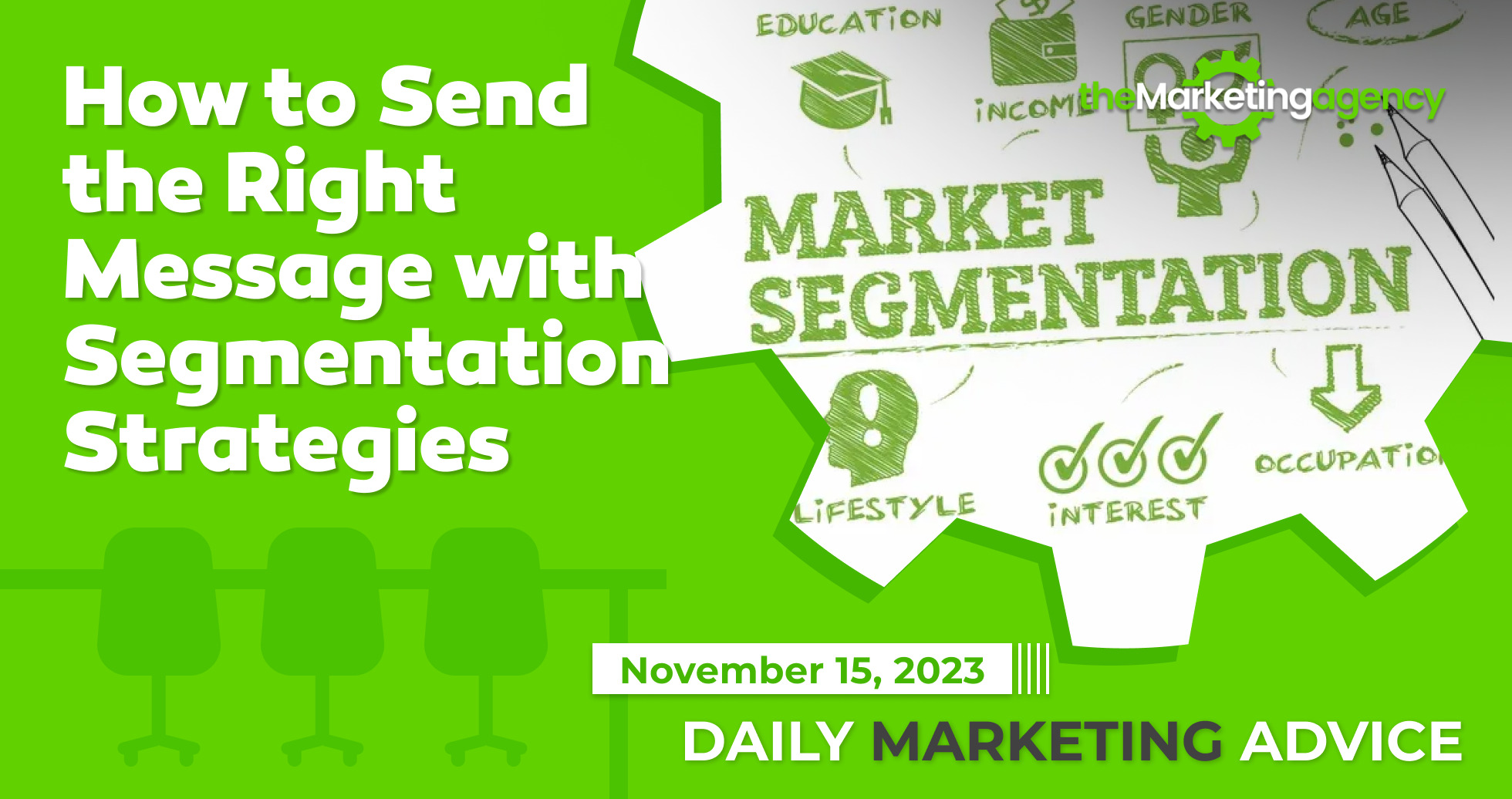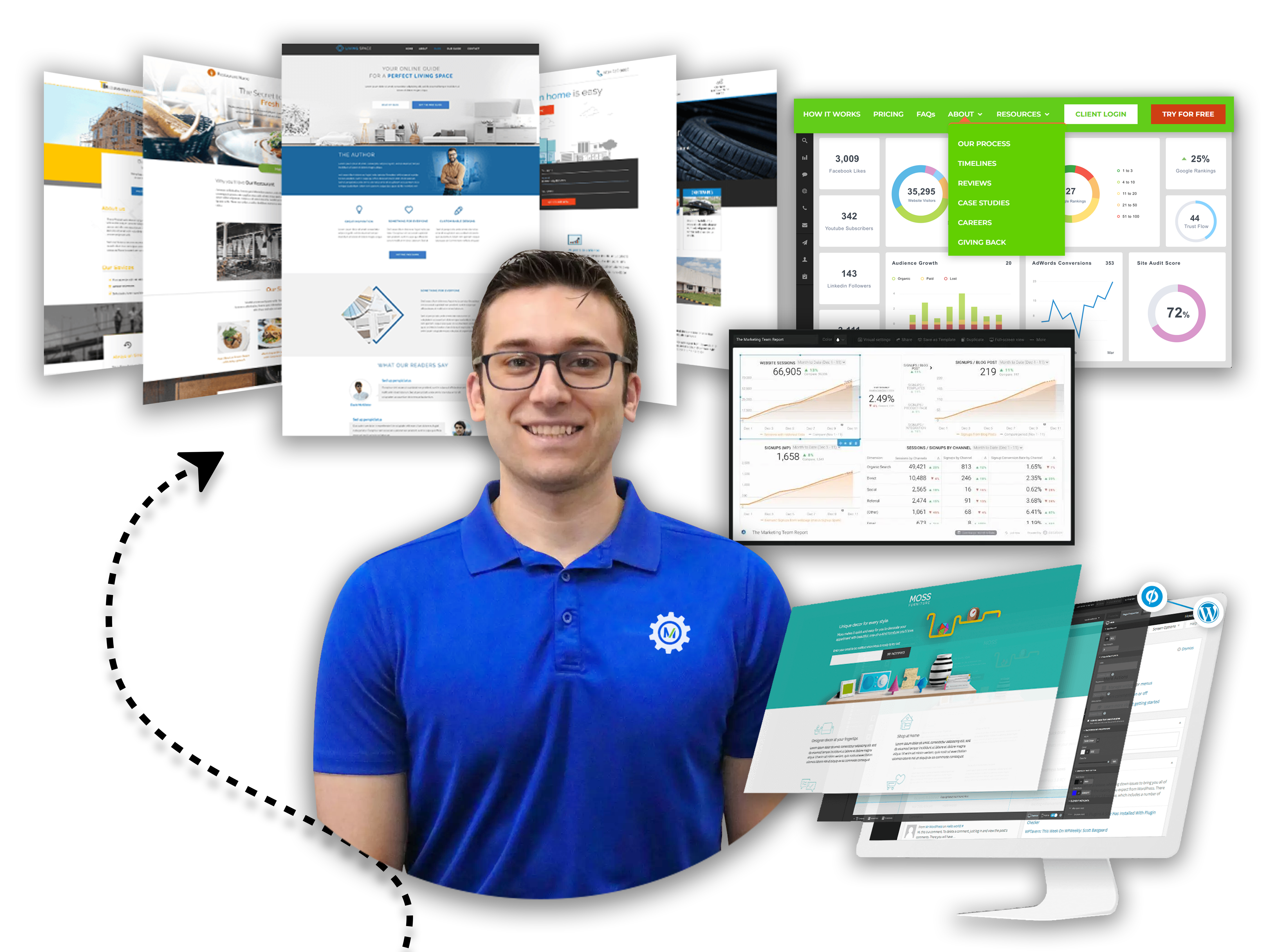How to Send the Right Message with Segmentation Strategies

Ladies and gentlemen, the world of marketing is a complex, multifaceted landscape. In today's digital age, sending the right message to the right audience can be the difference between success and obscurity. Enter segmentation strategies, a powerful tool that can help you send the precise message your audience needs to hear.
But before we delve into the 'how' of segmentation, we must first understand the 'why.' Why is sending the right message so crucial? It's a question of significance and resonance.
The Significance of Sending the Right Message
Imagine standing in a crowded room, trying to have a conversation. The noise level is deafening, and you're struggling to hear. Suddenly, someone approaches you, speaks directly into your ear, and addresses a topic you're deeply passionate about. In that moment, their message is not just significant; it's personal. It grabs your attention, and you listen intently.
This is precisely what effective segmentation strategies do in the world of marketing. They allow you to cut through the noise and speak directly to the hearts and minds of your audience. It's not about shouting your message to the masses; it's about whispering into the ears of those who care the most.
Understanding the Power of Segmentation
Segmentation strategies are akin to wielding a finely crafted tool. Just as a surgeon employs precision instruments to perform delicate procedures, marketers use segmentation to reach the right individuals with the right message at the right time.
But what is segmentation, you might ask? In essence, it's the process of dividing your audience into distinct groups based on shared characteristics, interests, or behaviors. This division is the foundation upon which you can construct highly personalized and relevant marketing messages.
The goal is not just to understand your audience but to know them intimately, as you would a close friend or confidant. With segmentation, you can achieve just that, fostering deeper connections with your customers.
Types of Segmentation Strategies
Segmentation is not a one-size-fits-all solution. There are various ways to divide your audience, and the choice of strategy depends on your goals and the nature of your business. Let's explore some fundamental segmentation strategies:
- Demographic Segmentation: This method classifies your audience based on demographic data such as age, gender, location, income, and education. It's like creating a detailed character sketch for each group. Understanding these basic traits allows you to tailor your message accordingly.
- Psychographic Segmentation: This strategy delves deeper into the psyche of your audience. It takes into account their lifestyle, values, interests, and personality traits. Think of it as a psychological profile. With psychographic segmentation, you can create messages that resonate with their innermost desires and beliefs.
- Behavioral Segmentation: Behavioral segmentation looks at how your audience interacts with your brand and your products. It considers factors like past purchases, website visits, and engagement with your content. It's like tracking a detective's case file. Understanding their behavior allows you to predict their future actions and send relevant messages.
- Geographic Segmentation: This method categorizes your audience based on their location. It can be as broad as countries or as specific as postal codes. Geographic segmentation is like navigating a map. It enables you to tailor your message to local preferences, climate, or cultural differences.
- Firmographic Segmentation: In the B2B world, firmographic segmentation comes into play. It focuses on the characteristics of businesses rather than individuals. Consider factors like industry, company size, revenue, and the number of employees. It's akin to understanding the DNA of each business you're targeting.
- Lifecycle Stage Segmentation: This strategy divides your audience based on their stage in the customer journey. It's like sorting people into different chapters of a novel. Are they new prospects, loyal customers, or somewhere in between? Understanding their place in the journey helps you tailor your message to guide them forward.
The Art of Personalization
Personalization is the heart and soul of segmentation. Once you've divided your audience into these distinct segments, you can begin crafting personalized messages that speak to their unique needs, desires, and pain points. Personalization is not just about adding a name to an email; it's about creating a message that feels tailor-made for the recipient.
Imagine walking into a bookstore, and the bookseller knows your taste so well that they hand you a novel they believe you'll love. That's the level of personalization you should strive for in your marketing. It's about making your audience feel understood and valued.
Crafting Personalized Messages
Here's the crux of it: to send the right message, you must understand the aspirations, fears, and motivations of your audience. This involves delving into the data you've collected through your segmentation strategies and using it to inform your messaging.
- Use Their Language: Speak to your audience in a tone and style that resonates with them. If you've identified a segment of your audience as tech-savvy millennials, using industry jargon or clichés won't cut it. You need to use their language, addressing their unique concerns and interests.
- Offer Solutions: Personalized messages should not just acknowledge the problems your audience faces but also provide tailored solutions. Address their pain points directly and show how your product or service can alleviate their concerns.
- Recommendations and Offers: Leverage the behavioral data you've gathered to make personalized recommendations or offers. For instance, if a customer has previously purchased a specific type of product, you can suggest complementary items or discounts in that category.
- Timely Communication: Understand the lifecycle stage of your audience segments, and time your messages accordingly. For example, don't send a new prospect a discount offer; instead, focus on providing valuable information to nurture their interest.
- Feedback and Surveys: Encourage interaction with your audience by seeking their feedback. Understand their preferences, and use this information to improve your offerings and future messaging.
The Power of Behavioral Triggers
Behavioral triggers are like a compass guiding your marketing efforts. These triggers are based on how your subscribers or customers interact with your brand and content. They allow you to respond in real-time and send targeted messages.
For instance, if a subscriber opens an email but doesn't make a purchase, you can trigger an automated follow-up email. This follow-up can provide additional information, answer questions, or present a limited-time offer. This level of attention demonstrates that you're actively engaged with your audience.
A/B Testing for Continuous Improvement
In the world of segmentation, A/B testing is your laboratory. This method allows you to compare two versions of a message or campaign to determine which performs better. It's not about guesswork; it's about data-driven decision-making.
You can experiment with various elements, such as subject lines, content, visuals, or calls to action. By analyzing the results, you can refine and optimize your segmented campaigns over time. What works for one segment may not work for another, and A/B testing helps you uncover these nuances.
The Journey of the Customer: A Narrative
Consider the customer's journey as a story, one that unfolds chapter by chapter. Each segment is a different chapter in this narrative. The goal is to guide your customers through each stage of the journey, much like a well-crafted novel that keeps readers engaged from the first page to the last.
At the awareness stage, you may offer informative content that introduces your brand and its values. As your audience progresses to the consideration stage, you can provide in-depth product information and customer testimonials. Finally, when they're ready to make a decision, you can send incentives like discounts or limited-time offers.
By automating and personalizing this journey, you ensure that your customers receive the right message at the right time, just as a skilled author knows when to introduce plot twists and character development to maintain engagement.
Conclusion: The Art and Science of Segmentation Strategies
In the ever-evolving world of marketing, segmentation strategies are your guiding light. They are not merely a collection of data; they are the compass that directs your messaging toward the right audience at the right time.
Segmentation is not about dividing people into neat categories; it's about understanding the intricacies of your audience, their dreams, their desires, and their challenges. It's about crafting messages that resonate at a personal level, offering solutions, and delivering value.
Effective segmentation strategies transform your marketing into a deeply personalized experience. It allows you to engage with your audience in a way that captures their hearts and minds. It's not just about sending the right message; it's about sending the message that matters most to the individual.
So, embark on this journey of understanding, segmenting, and personalizing your marketing. Consider it the art and science of sending the right message, the message that connects, resonates, and leads to lasting customer relationships.
NEED MORE CUSTOMERS?

At The Marketing Agency, we masterfully design a personalized marketing system that's guaranteed to bring new customers to your business.
How to Excel in Twitter Advertising: Best Practices




